Environmentalist and sustainability activist Donatus Rantan is showing me a large swath of land covered in grass with just a few burned tree trunks jutting out of it like totem poles. He tells me this area in the Tumbang Titi sub-district of West Kalimantan, Indonesia, used to be all primary forest.
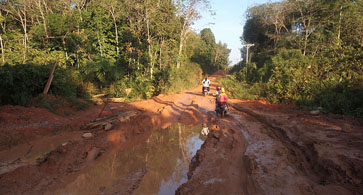
In the early 1990s people cut down the big trees, and it became secondary forest, and then fires burned that down and that’s when the grasses took over. This grass (imperata cylindrica) is highly flammable and once established, it forms a dense carpet, making it risky and problematic for anyone to try and manage it. These days the area is classified as degraded land.
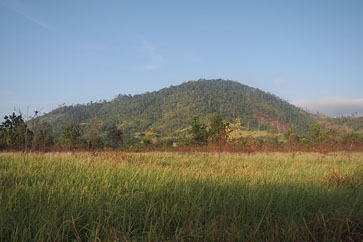
Are you enjoying this article? Read more like this, plus SSIR's full archive of content, when you subscribe.
Donatus thinks there is hope for this land.
Back in 1996, he worked with a CIFOR (Center for International Forestry Research) team on a project in which they experimented with planting laban trees as a buffer zone to slow the spread of fires. Laban trees are not only slow to burn, but also grow quickly on this type of land. Planted at the right intervals, they create a shade cover that will eventually kill the grass and allow other trees to come up.
Donatus is a native Dayak of the Pesaguan sub-group. The indigenous Dayaks make up about 40 percent of the population of Borneo, and are comprised of over 200 sub-groups, each with their own dialect. Donatus created his own NGO, Mata Rantai—after heading the Dian Tama Foundation for 10 years—to focus his energies on tackling problems in his native land of Tumbang Titi.
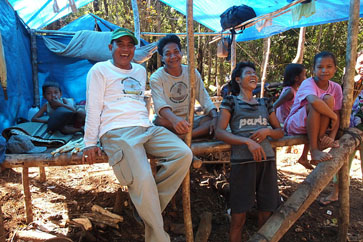
Mata Rantai is concentrating on restoring traditional village land that has been overrun by the fire-prone imperata cylindrica grass, and changing it back to diversity-rich forest. The trees and plants that thrive in this forest will give local villagers an opportunity to generate income through cultivating rubber trees, rattan palms (used for making furniture), and medicinal plants, as well as fruit trees like durian, jackfruit, and banana.
Donatus Rantan also wants to change the local Dayak tradition of slash-and-burn agriculture. This practice has to evolve, since there is less available land— forests have been cleared for monoculture crops like palm oil, and both legal and illegal mining. Slash-and-burn agriculture also creates smoke that fills the air every dry season and becomes a haze so thick that neighboring countries like Malaysia and Singapore formally complain to the Indonesian government.
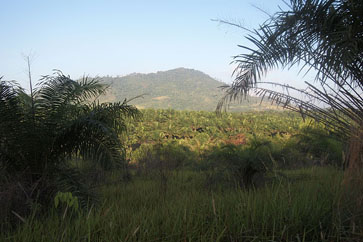
The success of CIFOR pilot project is readily apparent. It is now a forest with rubber trees, young durian trees, and all kinds of other vegetation. I even see some wild pineapples and a smattering of banana trees. All this land, he reminds me, was overrun by imperata grass just 15 years ago—no trees, just grass.
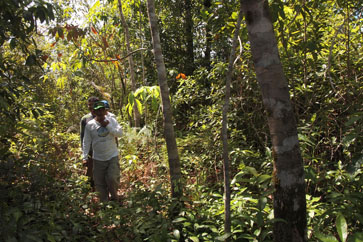
Donatus is beaming. He tells me that every time he comes to check on the progress, he is amazed at how well it’s turned out. The durian trees are still too small to bear adequate fruit, but some of the rubber trees have already been tapped and the rubber has been sold to a Chinese broker from Ketapang, the district capital.
Indigenous groups allocate their land based on mostly handed-down customary land rights, but unfortunately the current law does not fully protect them. Almost no titles to the land exist in written form, so although the locals understand whose land is whose, legally it is a grey area.
According to current legislation, customary land rights can be removed for the sake of public (government) interest. Donatus thinks that restoring this land back to forest—by applying the same methods he and the CIFOR group used on the pilot project, and by getting the local people to manage and cultivate it—will give them a heightened sense of ownership. This, in turn, will discourage the government from giving the land rights to big industry.
The issue of customary land rights is in debate, and it seems reasonable that if we can create more positive and sustainable examples of land restoration, it will put pressure on the government and other agencies to curtail mining or palm oil concession licenses. Mata Rantai’s efforts might just be what indigenous people need to boost their claim that they are the forests’ best hope for a sustainable stewardship.
Read an interview with environmentalist Donatus Rantan at Ecodana.
Support SSIR’s coverage of cross-sector solutions to global challenges.
Help us further the reach of innovative ideas. Donate today.
Read more stories by Marc Henrich.

